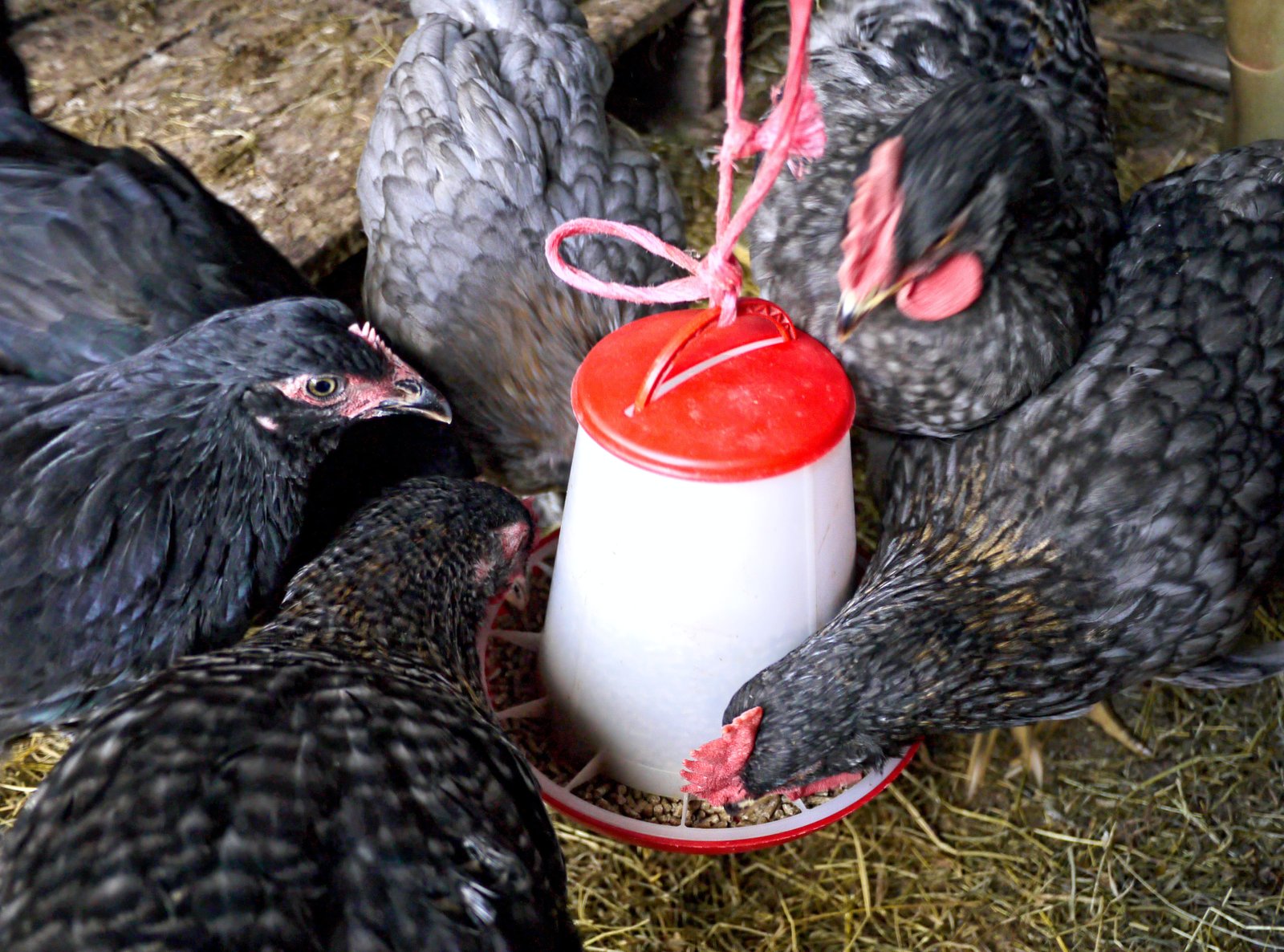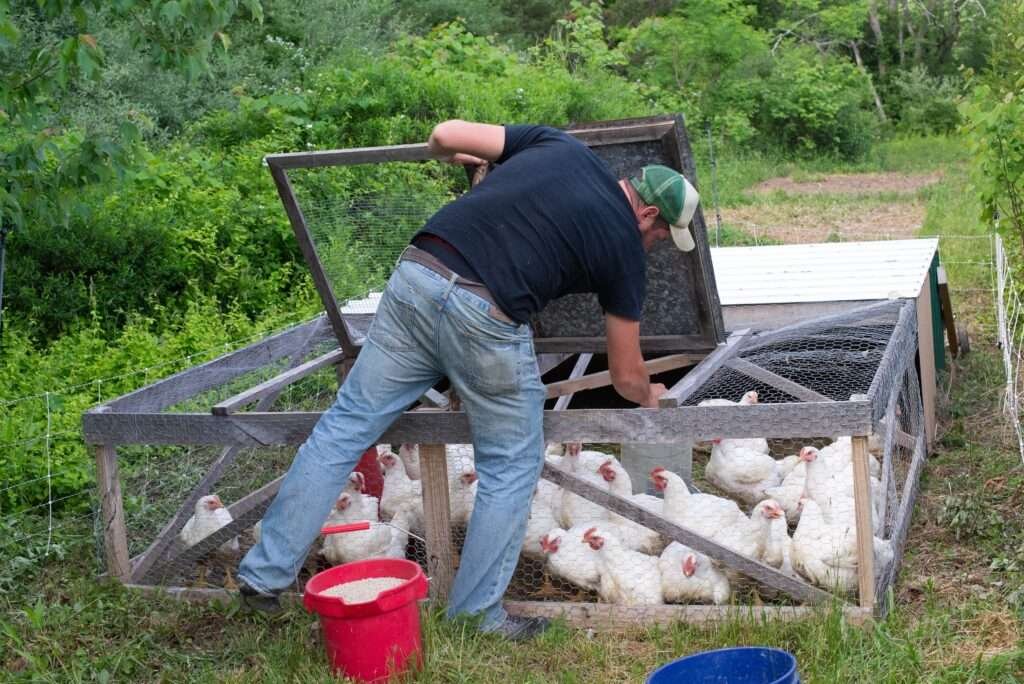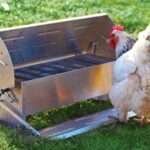Keeping chickens can be a rewarding experience, providing fresh eggs, entertainment, and a connection to nature. However, it also comes with various responsibilities and tasks that can sometimes feel overwhelming, especially for busy homesteaders or those new to poultry farming. The good news is that modern technology offers numerous solutions to automate and streamline many of the daily chores to simplify chicken raising. In this comprehensive guide, we will explore the best tips and resources for reducing your workload and making chicken raising easier through automation.
Automated Feeding Solutions:
Understanding the Importance of Proper Chicken Nutrition:
Before delving into automation, it’s essential to emphasize the significance of providing chickens with a balanced and nutritious diet. Proper nutrition plays a crucial role in their health, egg production, and overall well-being.
Introducing Automatic Feeders: Types and Benefits: Automatic feeders are an excellent investment to simplify chicken feeding tasks. There are various types available, including treadle feeders, gravity-feeders, and programmable feeders. These feeders ensure that your chickens have access to food at all times, and they help minimize waste by controlling portion sizes.
Choosing the Right Automatic Feeder for Your Flock:
When selecting an automatic feeder, consider factors such as the size of your flock, the type of feed you use, and the feeder’s durability. Assessing your specific needs will help you make the best choice for your flock.
Tips for Setting Up and Maintaining Automatic Feeders:
Proper installation and maintenance of automatic feeders are essential for their optimal performance. Regularly check and clean the feeders to prevent clogs and ensure the food remains fresh and palatable for the chickens.

Automated Watering Systems:
Ensuring Constant Access to Clean Water for Chickens:
Water is a fundamental necessity for chickens, and providing a continuous supply of clean and fresh water is vital for their health and productivity.
Exploring Various Automatic Waterers: Nipple, Cup, and Trough Options:
Automatic waterers come in different designs, such as nipple drinkers, cup waterers, and trough systems. Each type has its advantages, and the choice depends on factors like flock size, climate, and budget.
Installation and Maintenance Guidelines for Automatic Waterers:
Properly install the automatic waterers in your coop or run to ensure easy access for your chickens. Regularly check the waterers for leaks, blockages, or contamination to keep the water clean and disease-free.
Troubleshooting Common Issues with Automated Watering Systems: Despite their efficiency, automatic waterers can encounter occasional problems. Familiarize yourself with common issues and their solutions to avoid disruptions in water supply for your flock.
In the next sections, we will explore additional ways to simplify chicken raising through automation. We will discuss easy-to-clean coop flooring options, the convenience of automatic coop doors, and time-saving innovations in egg collection. Embracing automation can significantly reduce your workload, leaving you with more time to enjoy the company of your happy and healthy chickens.
Simplify Chicken Raising with Easy-to-Clean Flooring:
The Significance of a Clean and Sanitary Coop Environment:
Maintaining a clean coop is essential for preventing disease, promoting good hygiene, and ensuring the overall well-being of your chickens. The coop floor is a critical area that requires special attention, as it can quickly become soiled with droppings and debris.
Comparing Different Flooring Options: Sand, Deep Litter, and Removable Trays:
There are several flooring options to consider, each with its pros and cons. Sand provides a relatively low-maintenance surface that can be easily raked and cleaned. Deep litter systems utilize a thick layer of bedding that decomposes over time, reducing the frequency of complete clean-outs. Removable trays or droppings boards offer a convenient way to collect waste, simplifying the cleaning process.
Implementing Easy-to-Clean Floors to Streamline Mucking Out Tasks:
Opt for flooring solutions that allow for straightforward removal of waste, such as sand that can be raked or trays that slide out for cleaning. This will significantly reduce the time and effort spent on coop cleaning.
Tips for Maintaining a Hygienic Coop Environment Effortlessly:
Regularly inspect the coop for signs of dirt or dampness that could lead to health issues. Keep the coop well-ventilated to prevent moisture buildup, and use safe and effective coop disinfectants to maintain a healthy environment for your chickens.

Embracing the Convenience of Automatic Coop Doors:
The Importance of Coop Security and Predator Prevention:
Predators pose a significant threat to chickens, especially during the night when they are vulnerable. Automatic coop doors provide an added layer of protection by opening and closing at scheduled times to keep your flock safe inside the coop.
Understanding the Benefits of Automatic Coop Doors:
Automatic coop doors offer numerous advantages, including enhanced predator protection, convenience, and peace of mind. They eliminate the need for manual door opening and closing, which can be especially beneficial for early risers or late sleepers.
Evaluating Various Types of Automatic Coop Doors: Timer, Light Sensor, and RFID:
Automatic coop doors come with different activation mechanisms. Timer-based doors operate on a set schedule, while light sensor doors open and close based on daylight hours. RFID (Radio Frequency Identification) doors use tags attached to the chickens to detect their proximity and control access.
Installation and Programming Tips for Automated Coop Doors:
Proper installation is crucial for the efficient and safe operation of automatic coop doors. Follow manufacturer guidelines and ensure the door is balanced and secure. Additionally, program the door to match your chickens’ daily routine and adjust settings as needed with seasonal changes.
Simplify Chicken Raising in Egg Collection:
Efficient Egg Collection Methods for Hassle-Free Gathering:
Egg collection is a daily task for chicken keepers, and it can be time-consuming, especially in larger flocks. Implementing time-saving egg collection methods can greatly reduce your workload.
Exploring Roll-Away Nesting Boxes and Collection Conveyors:
Roll-away nesting boxes are designed to keep eggs away from the hen, preventing them from being soiled and minimizing breakages. Collection conveyors are mechanized systems that transport eggs from the coop to an external collection point, reducing the need for frequent trips to the nesting boxes.
Building a DIY Roll-Away Nesting Box System:
For those looking for a budget-friendly option, constructing a DIY roll-away nesting box system can be a rewarding project. We will provide step-by-step instructions and materials required to create your own time-saving egg collection solution.
Maximizing Egg Collection Efficiency with Minimal Effort:
In addition to using specialized equipment, organizing your egg collection routine can further enhance efficiency. Set a regular schedule for egg collection and establish a system for quickly checking the nesting boxes to ensure you gather all the eggs promptly.
In the next section, we will continue exploring additional ways to simplify chicken raising through automation. We will discuss low-maintenance chicken coop design, automatic lighting for optimal egg production, and strategies for streamlining flock health management. Embracing automation can revolutionize your chicken keeping experience, making it more enjoyable and less labor-intensive.

Simplify Chicken Raising: A Comprehensive Guide to Automating Tasks and Reducing Workload
Low-Maintenance Chicken Coop Design:
The Role of Coop Design in Reducing Workload:
A well-designed chicken coop can significantly reduce the time and effort required for daily maintenance tasks. Smart planning and consideration of various design elements can create a low-maintenance environment for your chickens.
Tips for Creating a Low-Maintenance Chicken Coop Layout:
Design the coop with easy access to feeders, waterers, and nesting boxes. Incorporate features like drop-down cleaning doors, removable roosts, and strategically placed ventilation to facilitate cleaning and upkeep.
Incorporating Ventilation and Natural Light for Optimal Coop Conditions:
Proper ventilation is crucial for preventing humidity and ammonia buildup in the coop. Consider incorporating windows, vents, or screened openings to ensure adequate airflow. Natural light can also positively influence chicken behavior and egg production.
Making Coop Repairs and Maintenance Less Time-Consuming:
Choose durable and low-maintenance materials for coop construction to minimize the need for frequent repairs. Regularly inspect the coop for any signs of wear or damage and address them promptly to prevent bigger issues.
Automatic Lighting for Optimal Egg Production:
Understanding the Impact of Lighting on Chicken Behavior and Egg-Laying: Light plays a critical role in regulating a chicken’s reproductive and laying cycles. Providing the right amount and type of light can influence egg production and overall flock health.
The Benefits of Automatic Lighting Systems in Chicken Coops:
Automatic lighting systems allow you to control the duration and timing of artificial light in the coop, mimicking natural daylengths. This can stimulate consistent egg-laying, especially during the winter months when daylight hours are shorter.
Setting Up and Programming Automatic Lighting Timers:
Install automatic timers for coop lighting and set them to match your chickens’ ideal daylength for egg-laying. Adjust the timers seasonally to maintain a consistent laying schedule.
Utilizing Natural Lighting to Supplement Artificial Lighting:
While artificial lighting is beneficial, don’t underestimate the importance of natural sunlight. Position the coop to receive adequate sunlight during the day, as it provides additional health benefits to your chickens.

Simplify Chicken Raising with Flock Health Management:
The Importance of Regular Health Checks for Chickens:
Proactive health management is crucial for preventing and addressing potential health issues in your flock. Regular health checks can catch problems early and promote a thriving chicken population.
Automating Health Monitoring: Smart Sensors and Apps:
Technological advancements have led to smart sensors and mobile applications designed to monitor chicken health remotely. Learn about available solutions that can provide valuable data on your flock’s well-being.
Keeping Digital Health Records and Vaccination Schedules: Transition from paper-based records to digital formats for easier access and organization. Keep track of vaccination schedules, deworming treatments, and any other health-related interventions.
Seeking Veterinary Advice Remotely Through Telemedicine: Telemedicine offers the convenience of consulting with a poultry-savvy veterinarian remotely. Explore how telemedicine services work and when it’s appropriate to seek virtual veterinary care.
Time Management and Workload Organization:
Tips for Effective Time Management in Chicken Raising:
Managing a chicken flock and the accompanying tasks require efficient time management. Implement strategies to prioritize tasks and allocate time effectively.
Creating a Schedule for Daily, Weekly, and Monthly Tasks:
Establish a comprehensive schedule that outlines daily, weekly, and monthly tasks. This will help you stay on top of routine chores and avoid feeling overwhelmed.
Streamlining Chores Through Teamwork and Delegation:
If you have family members or fellow homesteaders, involve them in chicken chores to distribute the workload. Assign specific responsibilities to different individuals to make the tasks more manageable.
Embracing Automation as a Tool for Better Work-Life Balance:
By automating tasks and following an organized schedule, you can enjoy the benefits of chicken raising while maintaining a healthy work-life balance.
Simplify Chicken Raising
Automating tasks in chicken raising can revolutionize the way you care for your flock, making it easier, more efficient, and enjoyable. From automatic feeders and waterers to time-saving innovations in egg collection and flock health management, there are numerous ways to reduce your workload while providing top-notch care for your chickens. By embracing automation, streamlining coop design, and implementing effective time management, you can create a harmonious and thriving environment for your feathered friends and yourself. Enjoy the rewards of raising chickens without feeling overwhelmed by the tasks—simplify your chicken raising journey through automation.




